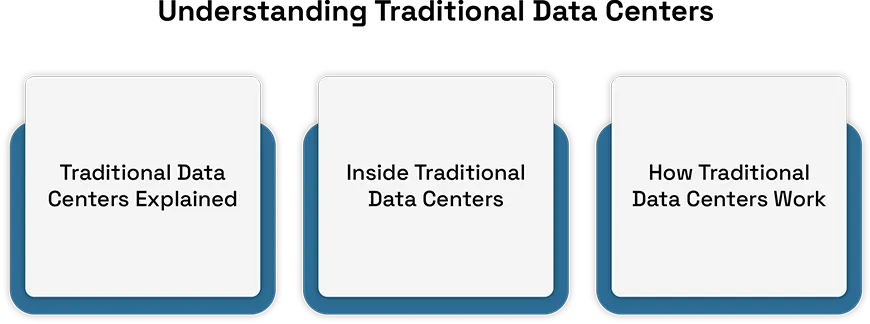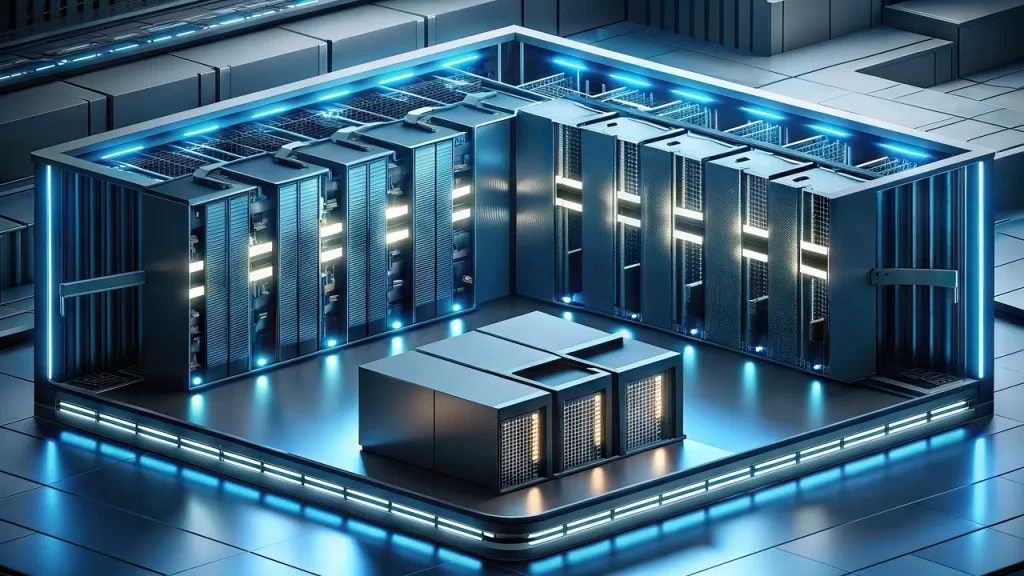Business data management practices have gone through substantial modifications in recent years. The relocation of traditional physical data centers by many companies occurs as they transition to cloud-based data center facilities. Organizations make this shift because they need flexibility together with cost savings and to optimize their performance. The advantages provided by virtualized data centers in cloud computing prove valuable yet traditional data centers continue to maintain their place. Organizations gain clarity through the knowledge of these differences to make informed decisions.
Understanding Traditional Data Centers
Traditional data centers operate as physical buildings that store server equipment together with networking technology and cooling systems. The centers maintain huge amounts of data storage facilities alongside processing databases that support the smooth functionality of businesses. Many industrial organizations maintain traditional datacenter facilities due to their high control capabilities over infrastructure assets and database resources. The facility presents strong security features with adaptable configurations which make it a perfect solution for companies under regulatory requirements.
The costs associated with caring for traditional data centers prove to be quite high. Companies must allocate funds to buy cooling systems and electricity as well as hire IT professionals to maintain continuous operation. Since hardware purchase stands as a fundamental requirement for scale-up operations it becomes both expensive and time-consuming. Businesses must implement additional disaster recovery systems which increase both the total costs and implementation difficulties.

The Rise of Virtual Data Centers
A virtual data center in cloud computing functions with software-based infrastructure rather than physical servers. Through a cloud platform businesses can retrieve their computing capabilities. This technique allows businesses to achieve efficient growth while decreasing their hardware costs. It also supports modern technologies like AI and automation, making operations smoother.
Virtual data centers provide flexibility to businesses as their main benefit. Organizations maintain absolute control over their resource utilization because they can both grow & minimize their infrastructure as required. Cloud providers give designed backup solutions that improve disaster recovery capabilities among these centers. The data centers operate in line with current sustainability trends because they minimize their use of physical equipment and power usage.
Benefits of Virtual Data Centers
The implementation of virtual data centers allows businesses to eliminate their need for high-cost hardware solutions as well as maintenance expenses. The solution saves businesses both infrastructure costs and operational costs, therefore proving cost-effective. Companies find it easier to scale their operation through virtual data centers which allows them to accept their computing resources needs by not requiring new physical servers. Organizations can grow their business operations through this flexible system that does not require infrastructure limitations.
The ability to restore operations after emotional events represents one of the main advantages that come with disaster recovery. Cloud service providers implement automatic backup functions that protect data from loss, especially during system breakdowns. The internal backup process functions to reduce systems downtime and secure data preservation. Through remote access, company employees obtain the flexibility to work from different locations, which improves team productivity. The environmental benefits of virtual data centers include reducing energy use and minimizing electronic waste, making them environmentally friendly solutions.

Key Differences Between Virtual and Traditional Data Centers
Infrastructure for Traditional data centers requires physical servers, networking equipment, and cooling systems which take up space and need constant maintenance. In contrast, understanding cloud-based data center networks allows businesses to operate digitally without on-site hardware and offers more flexibility.
Scalability is expanding a traditional data center which means buying and integrating more hardware which is costly and time-consuming. A virtual data center in cloud computing allows instant scaling, making it more cost-effective and adaptable.
Maintenance for Traditional data centers needs manual updates, hardware repairs, and IT teams for upkeep. Virtual data centers use automated software-driven updates, reducing downtime and the need for constant intervention.
The cost for Traditional data centers have high infrastructure, power, and maintenance costs. Cloud-based data centers use a shared-resource model where businesses only pay for what they use, leading to lower expenses.
Disaster Recovery for Traditional data centers requires separate, often costly backup solutions. Public cloud data centers have built-in redundancy, ensuring automatic backups and quicker data recovery in case of failures.
The Role of Virtualization in Modern Data Centers
Virtualization of data centers in cloud computing allows different virtual machines to share one physical server through virtual machines. Virtualization technology allows businesses to operate with fewer server machines but maintain complete computing power. Through the virtualization of physical hardware, companies gain financial benefits in addition to reducing their operational impact on the environment. Through virtualization, users can achieve better efficiency in managing their IT resources.
Another major benefit is automation. The implementation of software automation now completes operations that previously needed humans to help in traditional data centers. The system performs all necessary workstreams through continuous updates as well as management of performance and security status. The redirection of IT personnel effort into higher priority strategic goals becomes possible through this system. The new technology operates within data center industry trends by making operations more efficient and cost-effective.
Why Virtualization Matters
The technology of virtualization is important for current data centers and cloud computing environments since it allows effective server resource management through the simultaneous running of various virtual machines. The system allows better performance while minimizing hardware needs. Through virtualization technologies, the industry advances through automatic processes, which free IT personnel to cover strategic projects while speeding up new service deployments. The technology allows businesses to fulfill their environmental objectives as it minimizes resource requirements, thus reducing their energy use and greenhouse gas use. virtualization data centers achieve efficiency together with innovation and sustainability.
Industry Trends: Shifting Towards Cloud Solutions
Global businesses implement datacenters for cloud computing at an increasing speed. Many organizations are choosing cloud data centers in cloud computing as they want the advantages of scalability and reduced costs along with improved security features. Cloud providers dedicate their resources to AI-powered tools including grok AI for efficiency improvement and operation automation.
The shift toward this transformation exists because of sustainability’s importance as a primary factor. Governments together with enterprises work to develop cloud computing data centers as part of their carbon emission reduction efforts. Cloud data centers operated in the cloud utilize reduced amounts of energy than their traditional counterparts to provide environmental advantages. Modern business operations are migrating to cloud-based systems to maintain market leadership while reducing their total operational costs as technology progresses.
Conclusion
Cloud computing benefits from traditional and virtualized data center solutions in their way. The traditional system allows full control yet cloud networking delivers flexibility together with reduced costs. Companies must evaluate their needs before choosing between virtual or hybrid models because these methods will provide long-term success in evolving data center trends.








